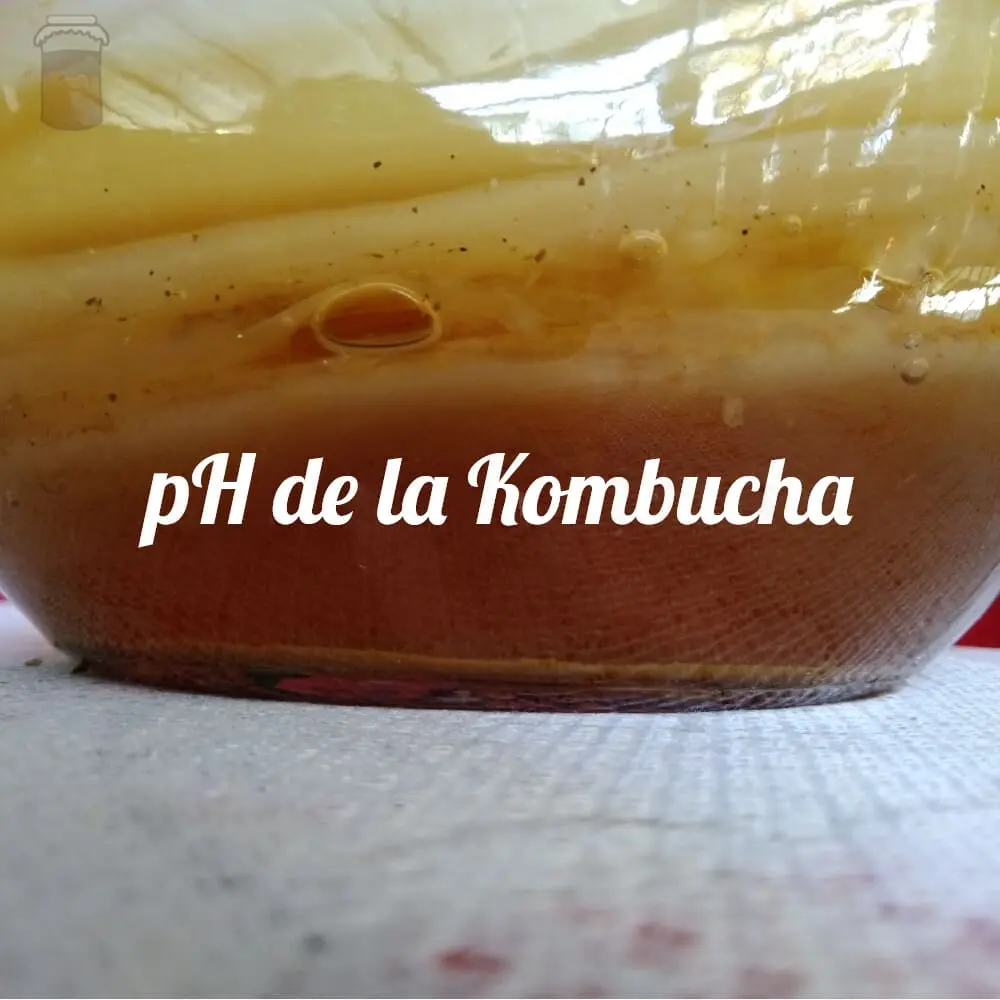Something very important to take into account in the preparation of kombucha is the level of acidity, also called pH, which is related to the safety and sensory quality of the drink. Thanks to this we can obtain a good fermented tea maintaining its properties that favor the health of the body.
Knowing how to control the pH, considering the time, will allow to keep it at an optimal level of consumption, therefore, knowing how varied the pH values can be during fermentation will allow us to determine the type of drink we want to obtain (slightly acidic or very acidic) and avoid any complications in health by exceeding an acidity harmful to the digestive system.
Contents
Why does the pH of kombucha change?
The substances contained in kombucha, such as alcohol and sugar, are degraded during fermentation producing organic acids and other metabolites that condition the acidic environment of the drink. Because of this the level of acidity varies with the fermentation time, increasing as the days go by. [1]
During fermentation alcohol and sugar decrease, as they are used as substrates for the formation of organic acids, acetic acid being more dominant, contributing to the decrease of a pH of 5 to 3. [2]
Acetic acid bacteria (BAA) as well as lactic acid bacteria (BAL) have a better capacity for development at a pH lower than 5.4, therefore, the colony of bacteria and yeasts present in the drink need a sufficiently acidic medium to survive, tolerating on average pH of 6.5 to 3.6 even reaching 2.5. [2]
How can it vary over time?
There are different pH ranges that kombucha can have during fermentation, since it gradually decreases until at some point it decreases abruptly given the peak of microbial growth reached by the bacteria and yeasts present in the broth. [3]
Initially we have a pH of 5.3 which is reduced to 3.6 in 7 days of fermentation, and in a few days lower abruptly. From the first day the fermentation broth has a pH of 5.3 which decreases little by little to 4.3 and before completing the week to 3.6, then at the beginning of the second week it can quickly drop to 2.5. [3]
Apparently, this is the maximum limit to how far it can decrease, since after a maximum of 30 days or 6 weeks this level is still observed (2.5), even if the production of organic acids continues to increase. [3]
Therefore, depending on the fermentation time we can obtain different values, by which the optimal pH of consumption can be obtained in a maximum of 7 or 10 days of fermentation.
Can any changes in the preparation or ingredient modify the pH?
The microbial content and its fermentation capacity are responsible for pH changes, so any factor that harms them could alter the commonly known values. Even so, it does not always have to do with some negative effect, certain types of tea or ingredients can modify the final acidity of the drink.
In a range of 15 days black tea can bring pH 2.7 at the end of fermentation, while green tea takes it to 2.9 and oolong tea to 2.8. Therefore, the most acidic drink is obtained by using black tea in the preparation.
Speaking of different types of tea, I leave you a fairly complete comparison on the fundamental properties of kombucha with green and black tea.
As already mentioned about the fermentation capacity, it is possible that this higher acidity is obtained with black tea because it is a fully fermented tea, while oolong tea is semi-fermented and green tea (with the pH less acidic in the final product) is non-fermented. [4]
In other studies it was observed that different temperatures do not affect the pH of the medium, it is possible that exposure to oxygen and oxidation can affect the pH as well as pollution. However, some buffering effects of broth can prevent an excessive decrease in pH by keeping it in the 2.5 limit. [2] [3]
How to measure the pH of kombucha?
You can check the pH of your kombucha by measuring the acidity level from day zero and repeating at 3, 7, and 10 days of fermentation. In this way you can compare the values and identify any abnormal changes in the pH values that indicate a possible drawback either in the ingredients used or contamination of the medium. [2]
It can be measured with calibrated portable digital pH meters or pH test strips. You should use them throughout the fermentation process and not just once, as the purpose of this is to control the proper course of fermentation.
If on day ten of fermentation you notice that the pH did not reach 2.5 you should discard the broth. [5]
An optimal pH is required for the correct development of microorganisms that will favor fermentation forming new SCOBY and kombucha broth, as well as avoiding the possible formation of contaminants, as we will see below. [2]
Why is it important or what is its benefit?
The low pH of kombucha works as a defense mechanism against microbial contamination. The level of acidity prevents the viability of a large number of microbes, being the BAA and some yeasts present in the drink the only ones capable of supporting this medium and responsible for maintaining it. [1] [2]
The pH determined by the concentration of hydrogen ions and organic acids determines the growth of each species of microorganisms, allowing only those capable of withstanding this medium to survive by providing protection against a wide range of pathogenic microorganisms. [1] [2] [4]
Kombucha tea has an antimicrobial effect against different pathogens such as Salmonella Typhimurium, E. coli, Shigella dysenteriae, Vibrio cholerae, Helicobacter pylori, Candida albicans, among others, either due to its low pH and / or the production of antimicrobial agents. Therefore, it is considered for the treatment against enteric pathogenic bacteria. [4]
We have dealt with this topic in part when we discussed, for example, the effect of kombucha on gastric ulcers, the consumption of kombucha for acne or kombucha and yeast infections.
Danger of taking kombucha with very low pH, up to what limit?
Consuming kombucha with a high acidity can generate problems at the level of the digestive system, which can even be serious, it is very important to take into account the fermentation time and the amount of drink consumed also considering the final pH obtained. [1]
People suffering from gastrointestinal reflux should avoid the consumption of kombucha, the acidity levels of the drink either in 7, 10 or 15 days of fermentation can reach a range of 2.9 to 2.7, being very dangerous and incompatible with life for those with these conditions. [4]
Although the consumption of kombucha with a final pH of 2.5 is still approved for people without the difficulties already mentioned, even so, it is recommended to prepare kombucha with an acidity level that does not fall below 3 and only consume a maximum of 240 ml per day, for greater safety. You should also consider alcohol levels which increase the acidity of the drink. [4] [6]
I leave you the article about the alcohol content of kombucha, as well as the recommended dose and when to drink it.
Security measures
Aside from consumption and preparation considerations, an important point to consider is the containers where this acidic kombucha is stored or prepared, there is a potential chemical hazard related to lead, and the containers used.
It is recommended to store them in glass containers. Other types of materials are more likely to corrode due to exposure to a very low pH, using ceramic containers can cause lead poisoning by releasing it by leaching caused by acid. [5]
Metal containers, unless they are made of stainless steel, can corrode when in contact with the drink for a long time, while glass containers are the most suitable since they do not present these problems of chemical contamination or damage to the material that composes it.
It is required that they be containers marked as suitable for food use thus avoiding the adverse effects that can bring the use of inadequate containers. [7] [8]
So far comes our adventure with the pH of kombucha, for now, since we will always be updating our articles waiting for new research. To continue discovering more about kombucha, I leave you more information below.
Related Articles

